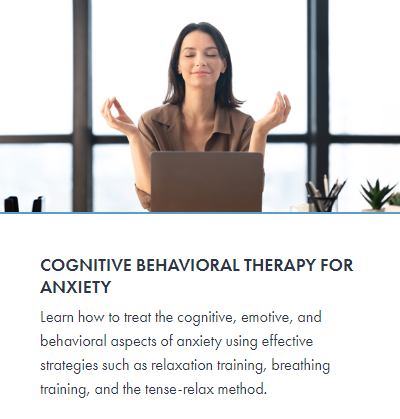Anxiety Disorders: Identification and Intervention
People with anxiety disorders are three to five times more likely to go to the doctor and six times more likely to be hospitalized for psychiatric disorders than those who do not experience anxiety disorders (Anxiety and Depression Association of America). Anxiety disorders can go undiagnosed due to significant overlap in physical and mental health symptoms. It is common for anxiety to present as fear or worry but may also present as anger or irritability. Mortality risks are increased due to associated physical causes, such as cardiovascular disease, and suicide. Physicians should screen to rule out causes of symptoms which may be somatic as a result of anxiety.
Common Symptoms of Anxiety
- Physical Symptoms: Rapid or pounding heartbeat
- Shortness of breath
- Excessive sweating
- Tremors or twitches
- Headache
- Fatigue or weakness
- Insomnia
- Nausea or upset stomach
- Frequent urination or diarrhea
Psychological Symptoms:
- Feelings of apprehension or dread
- Feeling restless or irritable
- Feeling tense or jumpy
- Anticipating the worst
- Constantly watching for signs of danger
- Constant worry
- Obsessive thoughts
Screening for Anxiety
Screening for anxiety disorders can be completed in various settings. Members with positive screens should be referred to an in-network mental health provider for complete assessment.
GAD-7 (Generalized Anxiety Disorder) – 7-question screening tool to identify whether a complete anxiety assessment is needed. Recommended for ages 17 and up.
PSC-PTSD (Primary Care Post-Traumatic Stress Disorder) – 5-item screener designed for the primary care setting to screen for post-traumatic stress disorder
Population-Specific Considerations
Adult/Elderly
Anxiety disorders are twice as common as dementia and 4 to 6 times more common than depression in the elderly.
For adults, anxiety is associated with:
- Poorer quality of life
- Significant distress
- The onset of disability
Stats/Facts
Anxiety disorders develop from a complex set of risk factors: genetics, brain chemistry, personality, and life events (ADAA).
Nearly one-half of those diagnosed with depression are also diagnosed with an anxiety disorder (ADAA).
Treatment and Resources
Treatment approaches may include a combination of medication, therapy, and support. Additional resources for members and providers may include:
National Institute of Mental Health: Anxiety Disorders
Anxiety and Depression Association of America
SAMHSA’s Understanding Anxiety: A Caregiver’s Guide
Molina Healthcare Case Management- Molina’s Case Management team offers support to members and caregivers. A dedicated Case Manager takes an integrated, collaborative approach to assisting with care coordination of both mental and physical health needs, health education, and connecting members and their caregivers to appropriate resources.
PsychHub Education and Learning Available to You
Through our partnership with PsychHub, an online platform for digital mental health education, Molina network providers are able to access PsychHub’s library of educational courses and material at no charge. To create an account at no cost, please visit the Molina PsychHub landing page at https://resources.psychhub.com/molina . Create an account to find these and other relevant courses:

